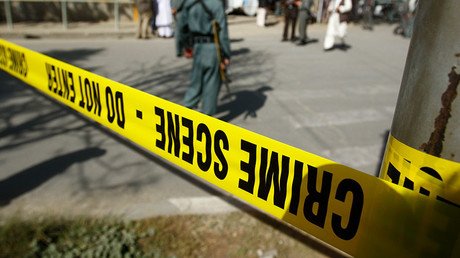ISIS shifting focus to Afghanistan, threatens Central Asia – CIS anti-terrorism chief

Islamic State terrorists are seeking to shift the main focus of their activity from Syria and Iraq to Afghanistan and neighboring states, Col. Gen. Andrey Novikov, the head of the Anti-Terrorist Center (ATC) of the Commonwealth of Independent States has said.
The Islamic State (IS, formerly ISIS/ISIL) terrorist group seeks to subdue some Taliban militants and other local extremist groups to create a new power base in Afghanistan and extend its influence to Central Asia, Novikov warned as he addressed two UN Security Council committees Friday.
The terrorist group “exports a new model of extremist and terrorist activity from the battle zones [in Syria and Iraq] to the Central Asian states,” he said, as cited by TASS. He particularly emphasized that the growing Taliban activity in the northern regions of Afghanistan, bordering the Central Asian, states could be indicative of some Taliban commanders switching their allegiance and joining Islamic State.
Novikov drew attention to the fact that the Taliban never laid claim to territories outside Afghanistan, while Islamic State in 2015 announced the creation of a new “province” with a center in Afghanistan that should also have included the territories of the Central Asian states.
“Analysis of the military clashes [in Afghanistan]… brings up the issue of the [local] militants adopting not only the strategy, but also tactical military concepts, which were previously typical for Islamic State,” he said. He added that Afghan extremists are now also trying to seize large settlements and then take the surrounding territory under control, thus preparing a bridgehead for further expansion.
At the same time, Islamic State fighters are engaged in a bitter confrontation with some Taliban forces over control over some Afghan territories.
“In the medium term, Islamic State set a goal of expanding its influence in the northern regions of Afghanistan and gaining access to the border regions of the Central Asian states as well as to the Chinese Xinjiang Uyghur Autonomous Region,” Novikov concluded.
More than 7,000 citizens of member states of the Commonwealth of Independent States are now wanted for terrorism-related activities, including the more than 2,000 who are fighting for terrorist organizations as mercenaries, the ATC head pointed out.
On June 20, the Pentagon issued a report, in which it said Afghanistan is “at a critical point” in its battle against multiple insurgencies and terrorist groups. It also revealed that US and Afghan authorities are now seeking peace through talks with the Taliban.
The US defense department conceded that sixteen years after the US-led invasion, Afghanistan still faces a “continuing threat” from as many as 20 insurgent and terrorist networks, calling it “the highest concentration of extremist and terrorist groups in the world.”
The US currently has 8,400 troops in the country, conducting “training, advising and assisting” of Afghan security forces as well as counterterrorism operations against ISIS, Al-Qaeda and other terrorist formations.














